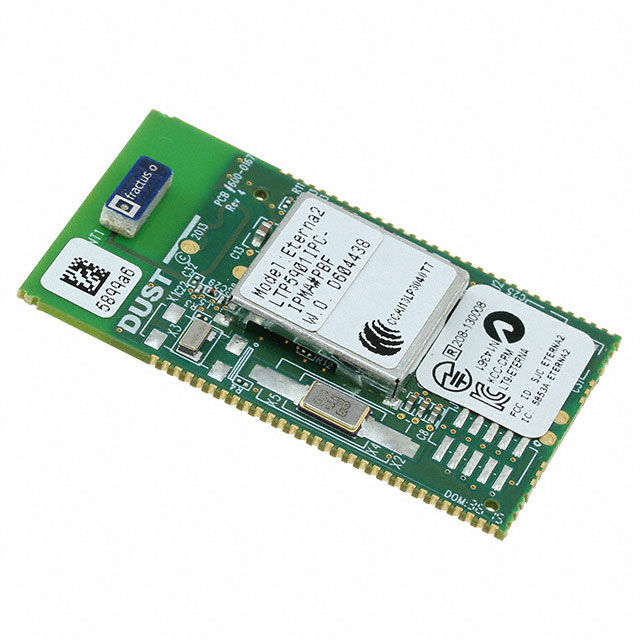Why Are Display Modules the Backbone of Smart Electronic Interfaces?
- joddiemarshall6
- May 30
- 4 min read
Introduction to Display Modules
Display modules are vital in translating digital data into visual information across a range of electronic devices. From small handheld gadgets to industrial control systems, these compact screens serve as the interface between machines and users. They come in various technologies, sizes, and configurations, tailored to suit specific design needs across consumer electronics, medical devices, automotive dashboards, and industrial tools. As the demand for interactive, real-time displays grows, display modules have become foundational components in both analogue and digital circuits.
Whether you're developing microcontroller projects or designing innovative interfaces, choosing the right display module determines not just usability but also system performance. In this blog, we explore the types, features, applications, and advantages of display modules to help you make informed decisions for your next project.
What Are Display Modules and How Do They Work?
Display modules are self-contained units that include a display screen (LCD, OLED, TFT, etc.), a controller, and often a communication interface. These modules simplify the integration of visual output into circuits without requiring extensive driver programming.
Depending on the technology used, a display module works by manipulating light or colour via electrical signals. LCDs rely on liquid crystals and a backlight, while OLEDs emit their light for sharper contrast. The controller interprets input signals from microcontrollers or processors and updates the screen accordingly.
Types of Display Modules: Which One Should You Choose?
Different projects call for various types of display modules. Understanding the available technologies helps you select the most effective one for your application.
Character LCD Modules
Suitable for displaying letters, numbers, and simple symbols
Typically configured in 16x2 or 20x4 formats
Operate efficiently in embedded systems using microcontrollers.
Common in measurement tools, controllers, and appliances
Graphic LCD Modules
Capable of displaying dots, lines, custom fonts, and images
Offer monochrome or multicolour display options.
Ideal for automotive clusters, industrial meters, and sensors
Provide a flexible solution for visualising complex data
OLED Modules
Emit light directly without a backlight.
Deliver high contrast, vibrant colours, and faster response time.
Commonly used in portable electronics, wearables, and sensor displays.
Consume less power, especially for black-background designs
TFT LCD Modules
Features full-colour displays with high resolution.
Support touch functionality in many variants
Widely used in smartphones, dashboards, and handheld diagnostics.
Provide wide viewing angles and vivid graphics
Where Are Display Modules Commonly Used?
Display modules are integrated into diverse devices across industries. Their primary role is to present data visually to users or operators, ensuring smooth interaction and data readability.
Consumer electronics: Smartphones, smartwatches, calculators, and portable gaming systems
Automotive systems: Instrument clusters, infotainment panels, and navigation units
Industrial applications: Control panels, testing equipment, diagnostic tools, and PLC interfaces
Healthcare devices: Digital thermometers, glucose monitors, and imaging equipment
Retail and advertising: Digital signage, point-of-sale terminals, and price checkers
What Features Define a High-Quality Display Module?
When selecting a display module, several technical and functional attributes need to be evaluated for optimal performance and compatibility.
Resolution and screen size: Determine the clarity and size of the information presented
Interface type: SPI, I2C, or parallel data for flexible microcontroller integration
Brightness and contrast ratio: Key for visibility in varied lighting environments
Power consumption: Essential for battery-powered devices
Viewing angle: Crucial in applications where screen alignment isn’t fixed
Operating temperature range: Important for industrial or outdoor use
Touch capability: Enhances user interaction where needed
What Are the Benefits of Using Display Modules?
Display modules offer multiple advantages that enhance both the design process and end-user experience. Their plug-and-play nature saves time and engineering effort while ensuring reliable operation.
Simplified integration into embedded systems and control units
Pre-installed controllers reduce programming complexity.
Enhanced visual communication for real-time monitoring
Compact and lightweight, suitable for space-constrained devices
Wide variety of options in size, resolution, and colour format
Long operating life with stable brightness and performance
How to Interface Display Modules with Microcontrollers?
Most display modules are designed for easy interfacing with popular microcontrollers such as Arduino, STM32, PIC, or ESP32. The process involves connecting the appropriate communication lines (such as SPI or I2C) and configuring the display using compatible libraries or drivers.
Ensure voltage compatibility between the module and the microcontroller.
Connect data and power lines as per the datasheet.
Use dedicated libraries like U8g2, Adafruit GFX, or Liquid Crystal for quick coding.
Calibrate display parameters such as contrast and backlight intensity
Which Industries Rely Most on Display Modules?
Display modules are indispensable across various industries due to their ability to provide critical information in an intuitive format.
Electronics manufacturing: For debugging, programming, and display prototypes
Automation and robotics: Used for diagnostics, status feedback, and manual override interfaces
Medical equipment: To present real-time patient data or test results
Aerospace and defence: Integrated into cockpit instruments and control panels
Renewable energy systems: Used in solar controllers and power inverters
Final Thoughts
Display modules serve as the visual communication bridge between users and electronic systems. With diverse technologies available—from monochrome LCDs to full-colour TFT touchscreens—they can be tailored to meet the demands of virtually any application. Their user-friendly interfaces, compatibility with controllers, and compact design make them essential in modern electronics.
As demand for smarter, visually engaging devices grows, display modules will continue to evolve, offering better resolution, lower power consumption, and greater adaptability. Whether you're developing a DIY project or engineering an industrial device, integrating the right display module ensures performance, usability, and success.



Comments